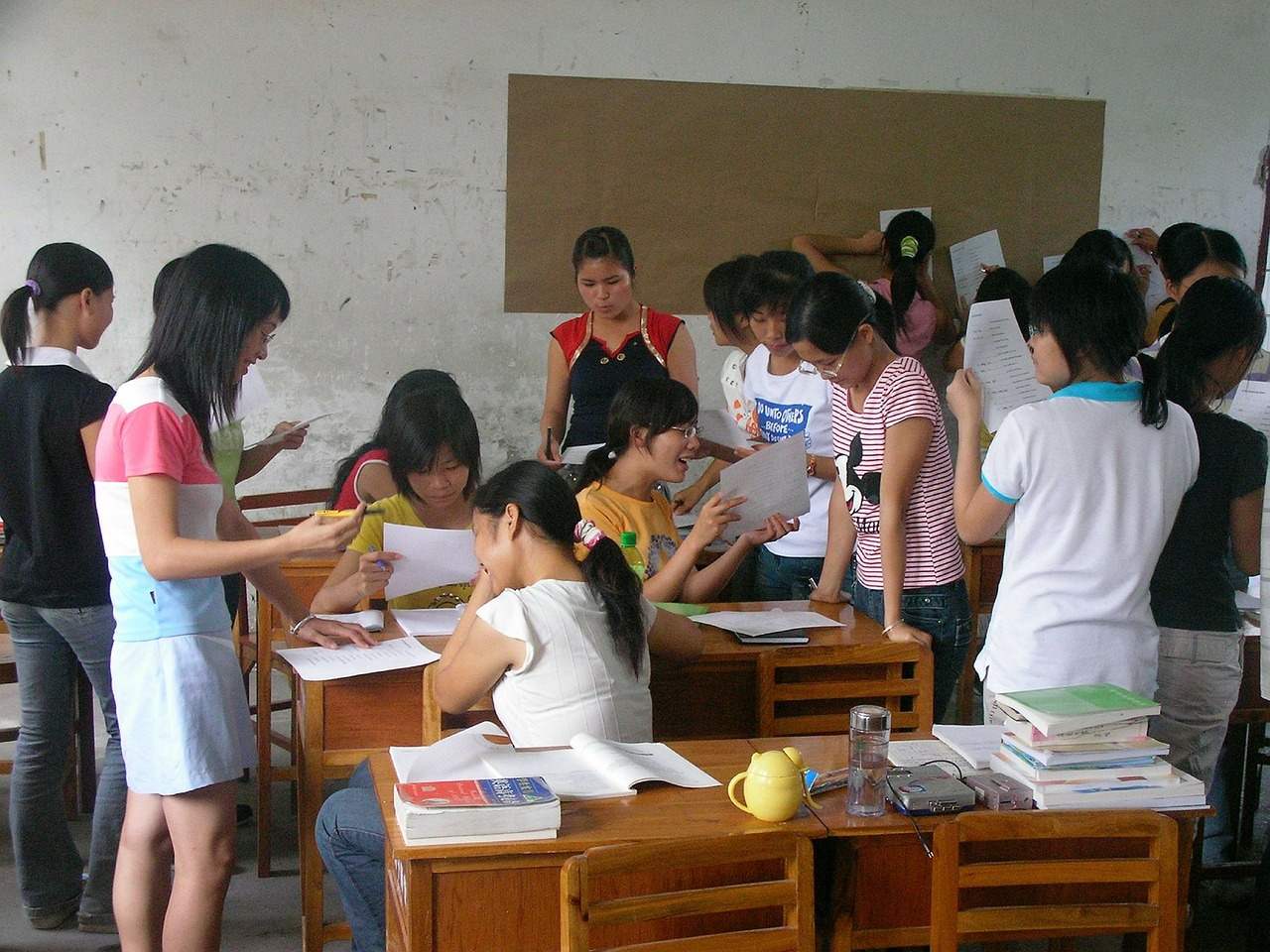Knowledge Building Circle

Students discussing a subject in the classroom (andros1234, Pixabay)

Students discussing a subject in the classroom (andros1234, Pixabay)
How does this align with my curriculum?
This strategy helps students co-construct collective knowledge.
Why use it?
- To deepen understanding through the exchange of diverse perspectives and ideas with classmates.
- To co-construct collective knowledge.
- To explore questions and ideas.
- To make connections between background knowledge, experiences and new learning.
- To practice adding evidence to support a theory.
- To find further questions and theories that can serve as new entry points for further investigation.
- To deepen understanding that all ideas are improvable.
Tips for success
- Pre-teach explicit procedures of how to engage in a Knowledge Building Circle ahead of time. These procedures may look slightly different for each group, but should focus on how to share an idea or question in the circle, how to show respect if you have a different idea or opinion, and how to listen attentively to the ideas of others.
- After scaffolding the process by direct teaching procedures and modelling, gradually release responsibility to the group to manage turn-taking as they become more comfortable.
- For younger students, have a certain number of turn-taking tickets or objects to monitor how often someone is contributing an idea to the circle to ensure that everyone has an equal chance to share. When a student wants to share an idea, they place their object inside the circle. When their turns (and objects) are used up, they either can actively listen or ask questions of other’s ideas.
How do I use it?
- When possible, have participants sit in a circle facing one another, so that they all see themselves as part of a learning community.
- Ensure students have access to sentence starters if they are new to the process (see “Using This Strategy” below).
- Begin the circle by posing a question, such as: “I am wondering where rocks come from? Does anyone have any ideas, information or observations they would like to share in our Knowledge Building Circle?”
- Have students join the discussion by sharing an idea, theory or another question.
- Create a way for students to indicate that they have an idea to share. This could be a raised hand, and hand over the heart, or simply waiting until there is a natural pause in the discussion (this may work best with older students or students who have experience participating in Knowledge Building Circles).
- Encourage students to build on another student’s discussion point, actively listen, or raise a new idea.
- Watch the process carefully to ensure it remains democratic, is focused on advancing learning and that everyone is involved.
- Use educator prompts to advance the discourse when needed (see the educator prompts below).
- Look for problems of understanding that arise through the discussion and consider these when designing next steps for the inquiry.
- In a virtual environment, have students turn on video cameras if possible and raise their hand to share.
Variations
Knowledge Building Circles can be used at various stages throughout an inquiry, such as:
- Following an initial hands-on provocation or outdoor experience, for learners to share what they know and questions they have connected to the topic.
- After identifying a question to pursue, for learners to share and negotiate their initial theories and predictions.
- In the Analyze and Investigate phase of inquiry, for learners to share new understandings that have arisen from recent experiences, observations, information and/or investigations. Learners can build on one another’s ideas by agreeing, disagreeing, or contributing a new idea or possible solution.
Assessment
Record student questions and contributions for:
- Assessment AS Learning: Gives a glimpse into a student's thinking and understanding and informs next steps in developing a responsive curriculum.
- Assessment FOR Learning: Allows educators and peers to provide meaningful, responsive and actionable feedback to one another.
- Assessment OF Learning: Comparing a student’s knowledge, ideas and understandings over the course of several Knowledge Building Circles can be documented as evidence of learning.
Using this Strategy
Example sentence starters for Knowledge Building Discourse participants
- I would like to build on (student name)’s idea...
- I think… because
- I think something different… because
- I don’t understand…
- I wonder…
- My prediction is…
- My theory is…
- Next I need to know…
Examples of educator prompts to advance discourse
- What questions do you have about…?
- How does that information support your theory?
- How has your thinking changed?
- Is there a theory that can connect both of these ideas?
- Did anyone find anything that might help us better answer our question?
- Can anyone think of a possible solution?
- Why has your theory changed?
- What evidence supports that idea?
Example sentence starters & educator prompts
Example sentence starters for Knowledge Building Discourse participants
- I would like to build on (student name)’s idea...
- I think… because
- I think something different… because
- I don’t understand…
- I wonder…
- My prediction is…
- My theory is…
- Next I need to know…
Examples of educator prompts to advance discourse
- What questions do you have about…?
- How does that information support your theory?
- How has your thinking changed?
- Is there a theory that can connect both of these ideas?
- Did anyone find anything that might help us better answer our question?
- Can anyone think of a possible solution?
- Why has your theory changed?
- What evidence supports that idea?
References
Knowledge Building Discourse; Anderson, D., Chiarotto, L., & Comay, J. (2017). Natural curiosity 2nd edition: A resource for educators: The importance of Indigenous perspectives in children’s environmental inquiry. Laboratory School, Dr. Eric Jackman Institute of Child Study, Ontario Institute for Studies in Education, University of Toronto, p. 14-19.